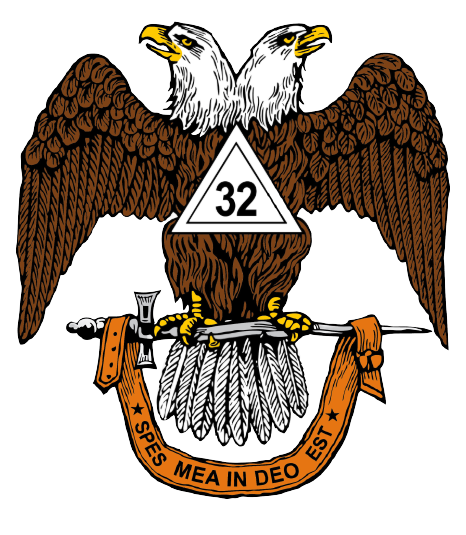The Western Mystery Tradition and the Scottish Rite: A Living Legacy

Throughout the ages, humankind has sought the hidden truths that lie beyond the veil of the material world. From the cryptic rites of ancient Egypt to the esoteric teachings of Pythagoras and the philosophical initiations of Plato's Academy, a lineage of sacred knowledge has wound its way through time, leaving a thread of wisdom we know today as the Western Mystery Tradition. This tradition—spanning civilizations, languages, and epochs—is no relic of the past. It lives, breathes, and speaks through the degrees of the Ancient and Accepted Scottish Rite of Freemasonry.
The Ancient Mystery Schools
The western mystery tradition finds its taproot in the initiatory schools of the ancient world. In Egypt, the Priests of Heliopolis were custodians of divine order (Ma’at), wielding sacred geometry and astronomical lore to construct not only pyramids, but principles of cosmic harmony. Their rites were not mere religious rituals, but transformational processes—meant to awaken the candidate to his eternal self.
In Greece, the Eleusinian Mysteries stood as the spiritual heart of the ancient world for nearly two millennia. The initiates of Eleusis were sworn to secrecy, but what little we know confirms the central themes of life, death, and rebirth—offering a vision of immortality and a life aligned with divine order. Plato, himself an initiate, wove these mysteries into his philosophical dialogues, embedding sacred teachings in the guise of dialectic.
The Pythagorean Brotherhood, more than a school of mathematics, was a sacred order dedicated to the purification of the soul. Numbers, to them, were divine archetypes—keys to the harmony of the cosmos. Their silence, their discipline, and their reverence for geometry echo through the ritual floorwork of our own craft.
Later, the Neoplatonists—especially figures like Plotinus and Iamblichus—preserved these ancient teachings under the mantle of philosophy, asserting that man could rise to the Divine through intellectual and spiritual ascent. This chain of wisdom was never broken; it was simply veiled anew as circumstances demanded.
The Rite as Heir and Temple
The Ancient and Accepted Scottish Rite, in its structure and symbolism, stands as the modern heir to this majestic lineage. It is not coincidence that we speak of degrees, or that the journey from the 4° to the 32° constitutes a spiritual ascent—mirroring the initiatory paths of antiquity. Our rituals are more than pageantry; they are enactments of eternal principles, expressed in moral drama.
While the form is modern, the essence is perennial.
Our Rite was shaped in the crucible of Enlightenment Europe, when mysticism, philosophy, and science converged in the minds of polymaths and adepts. Men like Étienne Morin, Frederick Dalcho, and Albert Pike did not invent this Rite ex nihilo—they revived it, distilled it, and gave it a body suitable for the modern world.
A Charge to the Brethren of Tennessee
As Scottish Rite Masons in the proud state of Tennessee, we do not merely attend meetings or perform rituals. We are, whether we remember it or not, torchbearers of a wisdom tradition stretching back to the dawn of civilization. Ours is not a speculative claim. It is a sacred inheritance.
To wear the double-headed eagle upon our chest is to affirm that we are custodes lucis—guardians of the Light. It is to say that we, too, have passed through the veils, encountered the Word, and returned not merely with knowledge, but with purpose.
Let us then carry ourselves accordingly. With dignity. With restraint. With a zeal not for self-glory, but for truth. Let our works—whether in lodge or in life—reflect the inner harmony we cultivate through the degrees. Let us extend a hand to the seeker, the initiate, and even the profane—not with arrogance, but with the humility of those who have glimpsed the Greater Work.
In an age of increasing materialism and spiritual forgetfulness, our Craft remains a bastion of the eternal. The temple is not in ruins. It is alive—in us.
So mote it be.
PS: Want your article published in this newsletter? Please email your articles to info@tennesseescottishrite.org for our editors to review your work!
